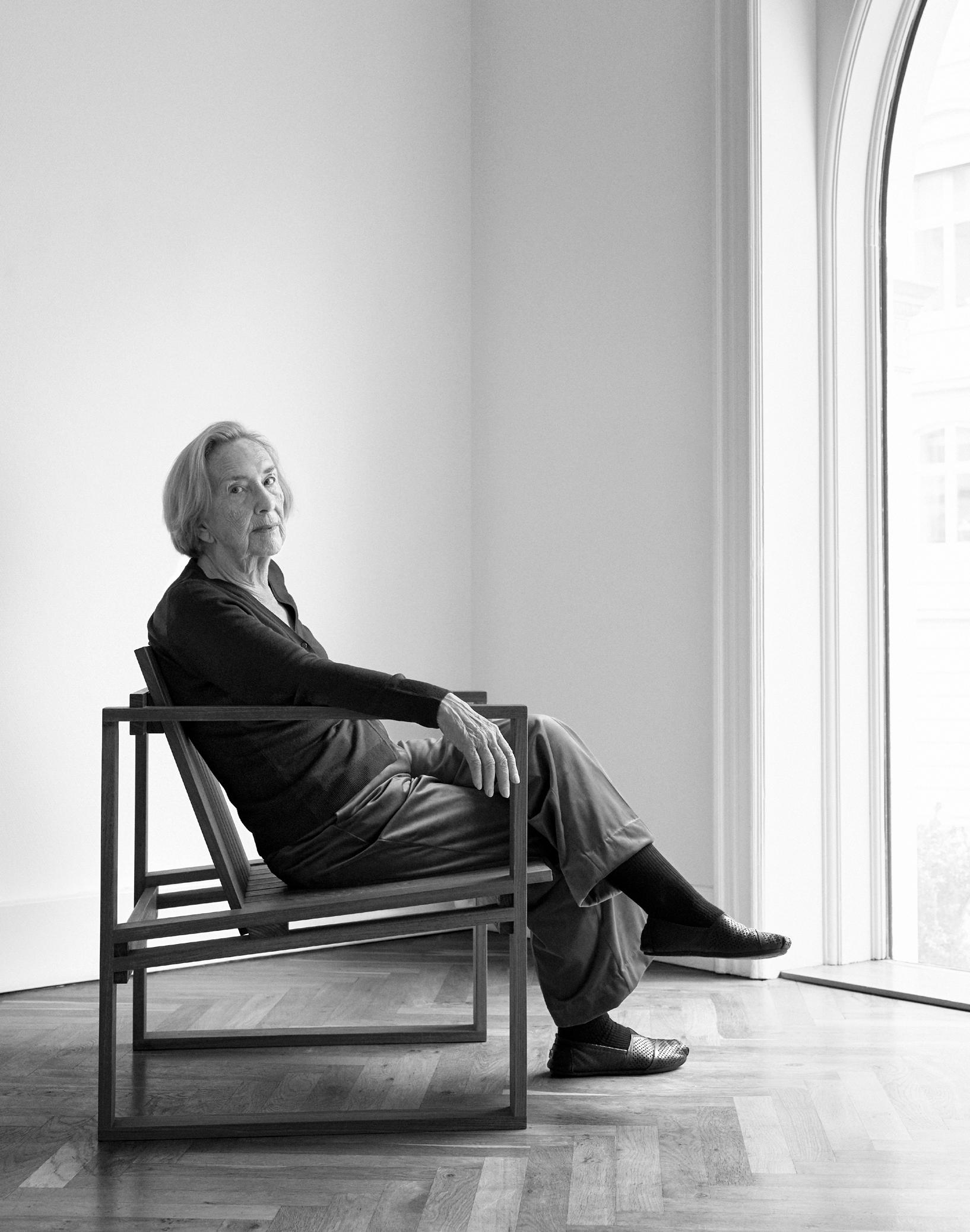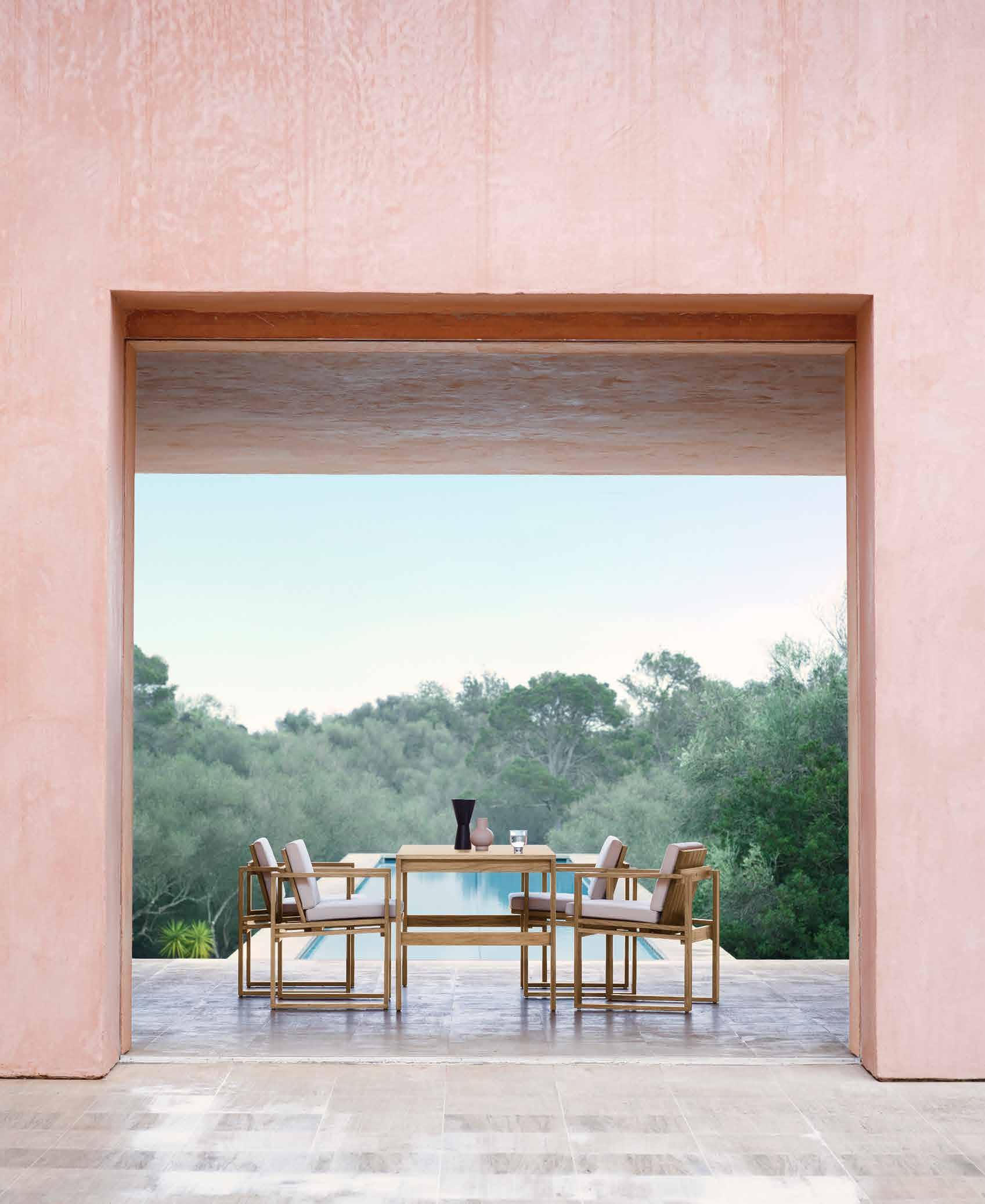
2 minute read
Bodil Kjær

Top left: Throughout her career as a professor and architect, Bodil Kjær traveled the world to gather knowledge, collecting methods and materials that could be used to realize her ideas for functional furniture.
Advertisement
Top right: The original drawings for the BK11 Lounge Chair from 1959.
Bottom right: The BK15 Dining Table and BK10 Dining Chair in teak, shot at the Neuendorf House in Mallorca – a vacation home designed by John Pawson and Claudio Silvestrin in 1987.

A CUBIST-INSPIRED SERIES
Inspired by the bold geometries of Cubism and guided by the principles of human scale and aesthetic balance, architect Bodil Kjær’s iconic Indoor-Outdoor Series was conceived as a collection of harmonious, contemporary architectural elements that would relate to their immediate surroundings, whether in or out of doors.
Six decades after the initial launch of Kjær’s Indoor-Outdoor Collection, Carl Hansen & Søn has now added this timeless series to its collection of design classics. Today, the collection is being produced for the first time in solid, FSC-certified teak – a durable wood species which can withstand a wide range of weather conditions and will develop a beautiful patina over time. The Indoor-Outdoor Series comprises a lounge chair, a small table, a dining table, a dining chair, a two-seater bench, a swing seat, and a sunbed. All seats, chairs, and beds can be supplied with slender cushions made from weather-resistant Sunbrella fabric.
Born 1932
Bodil Kjær grew up on her family’s ancestral farm near Horsens, Denmark, a home shaped by an appreciation of quality and aesthetics, a respect for nature, and an interest in societal dynamics. After completing her schooling, she spent a year in the UK where she became interested in furniture and design. Upon return, Kjær took up interior design studies under the tutelage of prominent figures such as Finn Juhl and Jørgen Ditzel.
Having honed her design skills in the US via the American Scandinavian Foundation, Kjær created several furniture pieces, or architectural elements, as she prefers to call them. She has always been preoccupied with how to construct furniture from a purely technical perspective – from the inside out, rather than based on form.
In 1960, Kjær established her studio in Copenhagen, creating showrooms, offices and exhibitions. Five years later she moved to London for further studies at the Royal College of Art and the Architectural Association School of Architecture. She remained there until 1979, working as a senior architect at the engineering company, Arup, on office, factory and university building projects. Kjær has been a guest lecturer and visiting professor at many leading architecture schools in Denmark, the UK and the US. Today she lives in the East Jutland region of Denmark.












